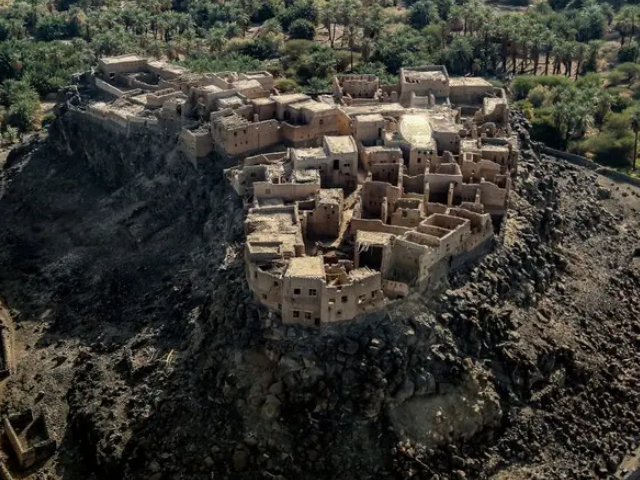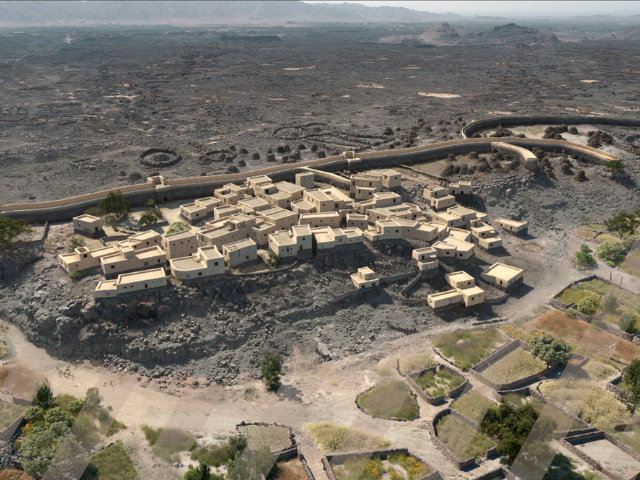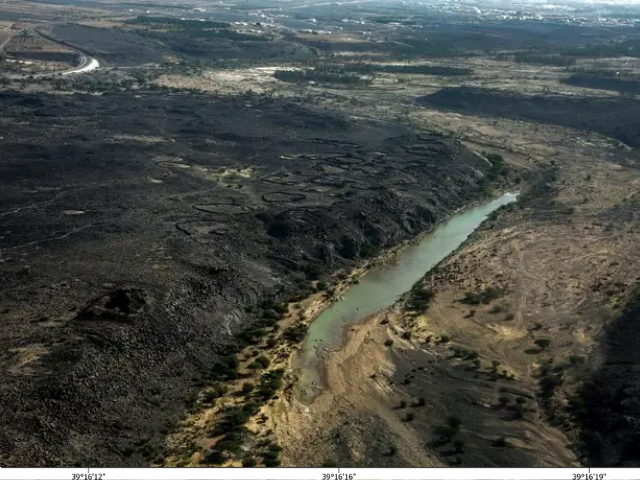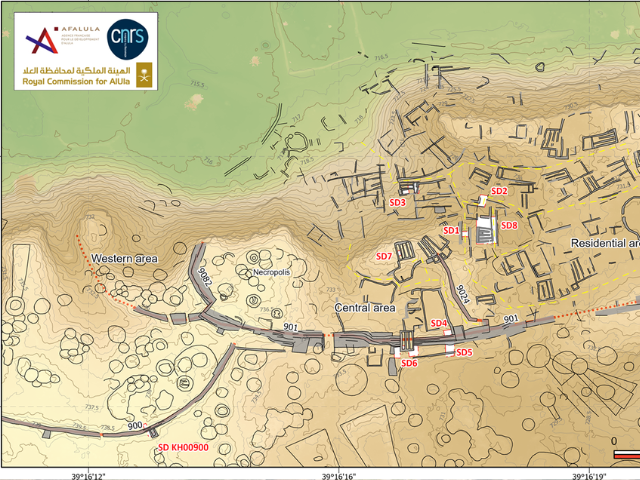
Archaeologists have uncovered a 4,000-year-old fortified town in the Khaybar Oasis, northwest Saudi Arabia, offering a rare glimpse into the region’s transition from nomadic to urban lifestyles.
The town, named al-Natah, dates back to approximately 2400 BC and displays early signs of social structure and urban planning. Situated within a walled oasis, al-Natah reflects the gradual shift towards urbanisation in the Arabian Peninsula, with fortified settlements facilitating exchanges among pastoral nomads.

An aerial view of an old fort in the Khaybar oasis in northwestern Saudi Arabia. Khaybar, best known for a 7th-century fierce battle. (CREDIT: Mohammad QASIM / AFP)
Published in the journal PLOS One, a study conducted by the Royal Commission for AlUla, in collaboration with the French Agency for the Development of AlUla (AFALULA) and the French National Centre for Scientific Research (CNRS), details findings from the al-Natah site.
The research reveals a 2.6-hectare settlement that supported an estimated 500 residents and functioned as a central hub within a larger network of walled oases and fortified towns in the region.
Archaeologist Guillaume Charloux, who led the research team, described al-Natah as a unique example of “slow urbanism,” where small-scale, community-centred urbanisation gradually replaced the pastoral nomadic lifestyle typical of northwest Arabia.
Unlike the grand urban centres of Egypt and Mesopotamia, the town reflects a distinct approach to organised living that adapted to the desert environment.
Located within the volcanic Harrat Khaybar field and at the intersection of three valleys, Khaybar’s arid landscape houses the al-Natah ruins, which were buried beneath basalt rock layers for millennia.
A 14.5-kilometre wall surrounding the settlement points to organised defences, likely designed to protect residents from nomadic raids. The town layout includes a residential area, a probable decision-making zone, and a necropolis, suggesting a well-structured community.

3D virtual reconstruction of the Bronze Age site of al-Natah. (CREDIT: CHARLOUX / CC BY-SA 4.0)
The study notes that al-Natah and other Bronze Age sites in northwest Arabia were interconnected through walled oases, forming a vital network that facilitated exchanges across the desert. Satellite imagery of al-Natah reveals house foundations and pathways that hint at advanced planning.
Excavations uncovered durable stone foundations capable of supporting multi-story buildings, which researchers suggest may have been used for housing, crop storage, and animal husbandry.
Artifacts recovered from the site, including pottery fragments, grinding stones, and metal objects like axes and daggers, reveal insights into the lifestyle and social organisation of al-Natah’s inhabitants. The ceramics indicate a relatively egalitarian society focused on sustenance rather than the opulent displays typical of other Bronze Age civilisations.
A necropolis containing stepped tower tombs and agate stones suggests the presence of metalworking skills and trade links that may have extended beyond the Khaybar Oasis.

Khaybar, best known for a 7th-century fierce battle between the Islam's Prophet Mohamed and local Jewish tribes is remodelling itself as an upscale tourist draw in line with the kingdom's rebranding efforts. (CREDIT: Mohammad QASIM / AFP)
Al-Natah’s fortified structure and trade links hint at the origins of the later Arabian incense route, which connected southern Arabia to the Mediterranean. Charloux noted that the oasis towns may have played a crucial role in establishing early long-distance trade networks, facilitating the exchange of goods such as frankincense and myrrh across vast deserts.
Al-Natah was likely abandoned between 1500 and 1300 BC, leaving few clues to its final phase. The reasons for its decline remain uncertain, though researchers speculate that environmental shifts, resource depletion, or changes in trade routes may have contributed to its abandonment.
Historians and archaeologists have praised the discovery for deepening the understanding of urbanisation in northwestern Arabia. Juan Manuel Tebes, a historian at Argentina’s Catholic University, described the Khaybar project as essential to reconstructing the timeline of social evolution in the region.

Map of the al-Natah site, with plan of the architectural features identified on the surface (black lines), reconstructions (grey lines) and layout of the rampart (dashed red line). (CREDIT: PLOS One)
Robert Andrew Carter, an archaeologist with Qatar Museums, remarked that this discovery provides crucial insights into the Bronze Age Arabian Peninsula, illustrating a path of urbanisation distinct from other ancient societies.
Today, the Khaybar Oasis stands as a testament to the resilience of early societies that managed to thrive in the challenging desert environment. Although modest compared to the grand cities of the ancient Levant and Mesopotamia, al-Natah offers a unique perspective on how these early communities adapted their urban lifestyles to the harsh Arabian landscape. Archaeologists plan to continue excavations at the site to uncover further details about the lives, customs, and eventual fate of the town’s residents.

















1730706072-0/Copy-of-Untitled-(2)1730706072-0-270x192.webp)
COMMENTS
Comments are moderated and generally will be posted if they are on-topic and not abusive.
For more information, please see our Comments FAQ